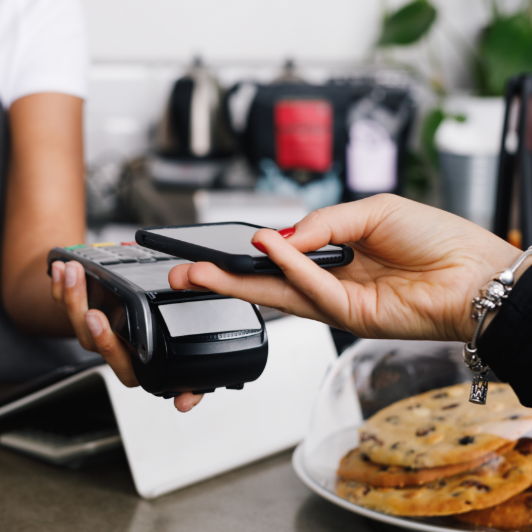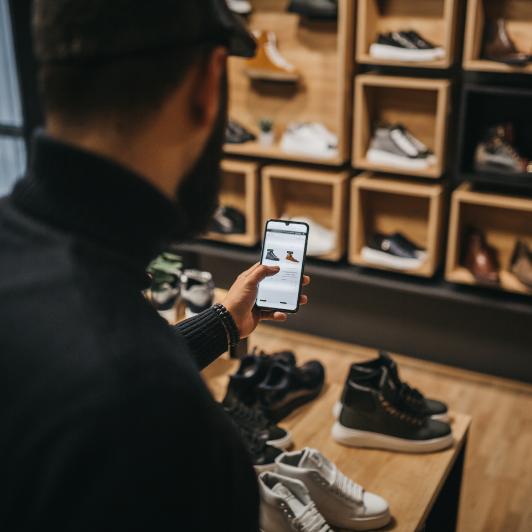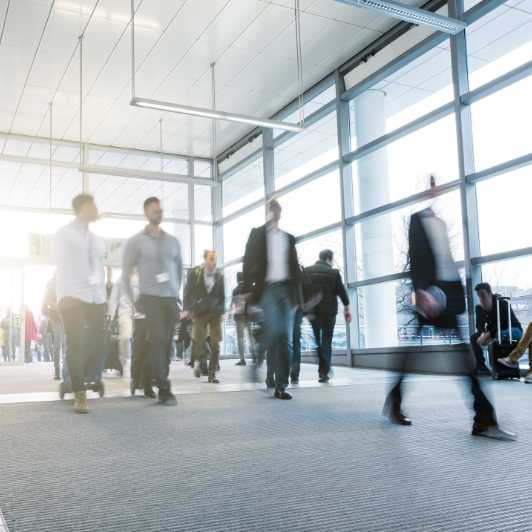Published: Jun 27, 2022
powering stores of the future with smart video analytics
Back to the Future with Smart Retail.
The pandemic has set in motion a rethink of our relationship with physical spaces, from factories to retail spaces, during the lockdowns of 2020, most of these physical spaces, and supposedly "essential" real estate were left largely vacant. Retail shops and the wave of closures across cities worldwide could almost serve as the poster child for the impact of the pandemic–even Microsoft’s physical stores were shut down around the US. Yet business seemed to continue as usual. Brands and retailers which had a dominant position online, and those who were able to pivot to digital-first touchpoints, even fared better.
But as the world reopens, will ecommerce continue to hold Its sway over consumers? Or will shoppers be back to business as usual at physical stores? The future might actually be more of the same but different.
Back to the future: transforming retail with smart retail spaces.
Foot traffic is a key factor of any successful retail store. And increasing customer traffic to physical stores is a constant challenge. Once in, retailers need to have accurate counts of customer foot traffic at any given moment, and a keen understanding of customers' in-store experience–all valuable data points that many stores are still missing. What’s next?
To plug the gaps in visibility and efficiency, industry leaders and innovators are turning to video analytics and any existing investments in IoT they may have to deliver what can be known as "Smart Retail". The advantages of smart retail applications are extensive, including in-store customer shopping experience, smarter retail check-out management and layout optimisation, prevent shrinkage / loss prevention, augment demand forecasting and inventory management strategies using in-store demographic data.

"Effective aisle management can make or break sales. With insights into aisles that are popular, the customer dwell times in each of them, and demographics of the customers captured through video analytics, you can adopt a proactive and agile approach to merchandising," he added.
The ability to now accurately analyse and engineer foot traffic allows store owners to ensure their business operations are as efficient as possible, allowing for easier decision making and improved sales numbers. By optimising their merchandising, they naturally optimise shelf-space, and are better positioned to offer promotions–sometimes in real time–combined with loyalty programs that are tailored to shoppers which their video analytics systems "recognise" to design more personalised, rewarding, and engaging shopping experiences.
It’s no surprise then, that global apparel brands such as H&M for are making fast moves into the smart retail space, turning to AI for more informed inventory management, agile merchandising, and stocking popular items based on insights from purchases and store receipts.
Optimising backend operations with indoor location tracking technologies
Indoor positioning systems (IPS) also play a pivotal role in enabling smart retail. They have been instrumental in helping users navigate indoor areas where GPS is not available or not accurate enough. Hong Kong International Airport uses this technology in their “HKG My Flight” mobile application. Similarly, in the retail industry, Lowes and Target are utilising this technology as well, to pinpoint where and how customers navigate their stores. A report by Gartner projected that 65% of enterprises will require indoor location asset tracking by 2022. For retailers, indoor positioning systems or indoor asset tracking technologies more visibility into supply chains, opening the way for more efficient manufacturing, packaging & shipping, and storage. A well-designed asset tracking strategy will position retailers, and brands to streamline supply chains and achieve more agility in adapting to demand dynamics, and procurement decisions.
For large retailers, a smart asset tracking solution covering hundreds of thousands of individual items will reap significant cost savings and untold operational efficiencies.
The new normal: shopping at smart stores.
The advantages of smart retail applications powered by video analytics, IoT, and Indoor Positioning Systems among others, are clearly extensive. In-store customer shopping experiences can be extended to support immersive AR experiences, while smarter retail check-out management and layout optimisation would streamline costs, accelerate sales turnover, and simplify last-mile shopping experiences. Ironically, ecommerce giants are also the ones spearheading smart retail spaces. Alibaba partnered with KFC to offer an option for customers to “Smile to Pay”, where facial recognition, coupled with existing records of businesses and their payment information allow cashless and intuitive checkouts. This initiative has included the $2.6 billion acquisition of the Intime department store chain, with 62 locations across 33 Chinese in addition to the opening of around 100 cashier-less Alibaba-owned Hema supermarkets.
"Video analytics and IoT are key technologies that drive "New Retail", a termed coined by Alibaba's Jack Ma. Stores may increasingly leverage video analytics and AI to design smarter, real-time, and personalised in-store shopping experiences for their customers," James Wong, Senior Partner of Global Business at NCS.
A smarter use of existing space: pivoting to smart retail
If smart retail is the new retail, how can existing property owners and retailers reposition for this future? The switch may be simpler than most think. Property owners who have already made investments in video analytics, IoT and connected building technologies, can renew their competitive edge and real estate portfolio by swiftly switching to smart retail offerings for tenants. "Landlords and real estate services providers present themselves as ready partners who can offer an almost "plug-and-play" smart retail platform for retailers and brands that seek to launch future-ready in-store experiences for customers,” says Wong.
At the time of writing, the Global Smart Retail market size is projected to reach USD 30.730 billion by the end of 2026, with a CAGR of 13.7% in the 2021–2026 period, signalling an accelerating rise in smart retail technologies investments and just how pervasive smart retail could be in the near future.
So just when it seems that physical retail spaces are seemingly threatened with obsoletion, connected buildings offers a new horizon of opportunities, and a smarter future that may effectively lift all boats, including those of property owners, real estate services providers, brands, and retailers.



